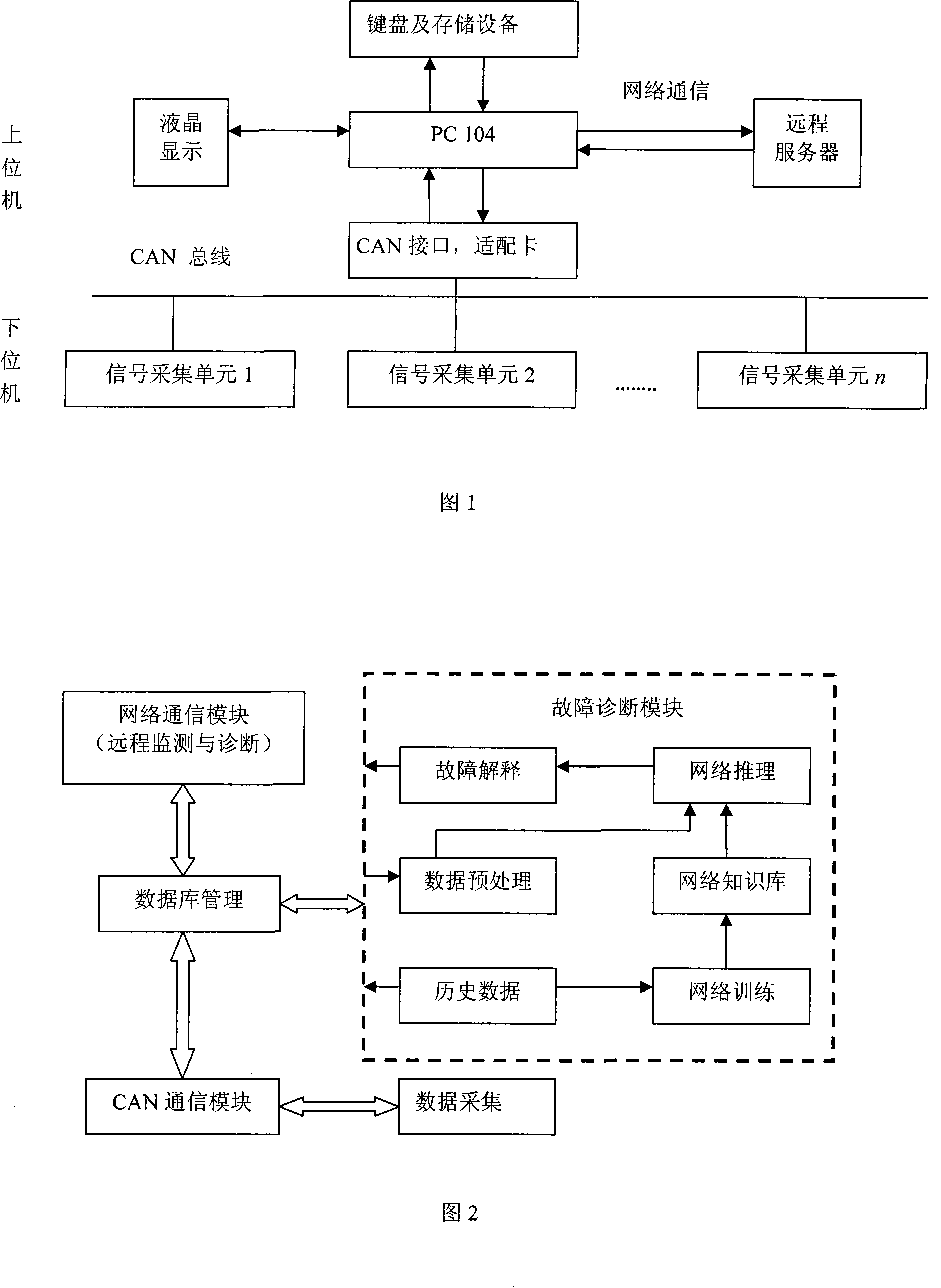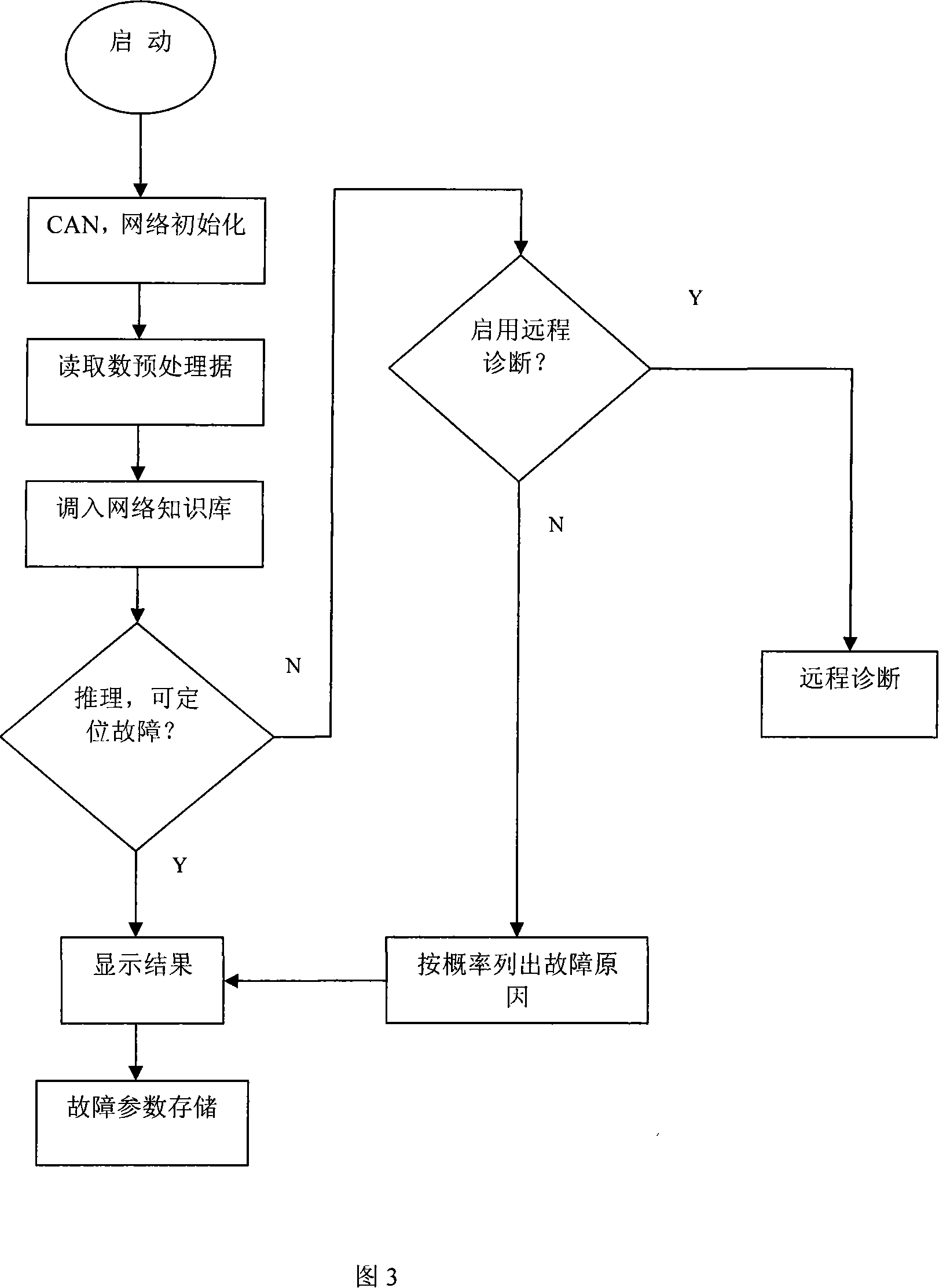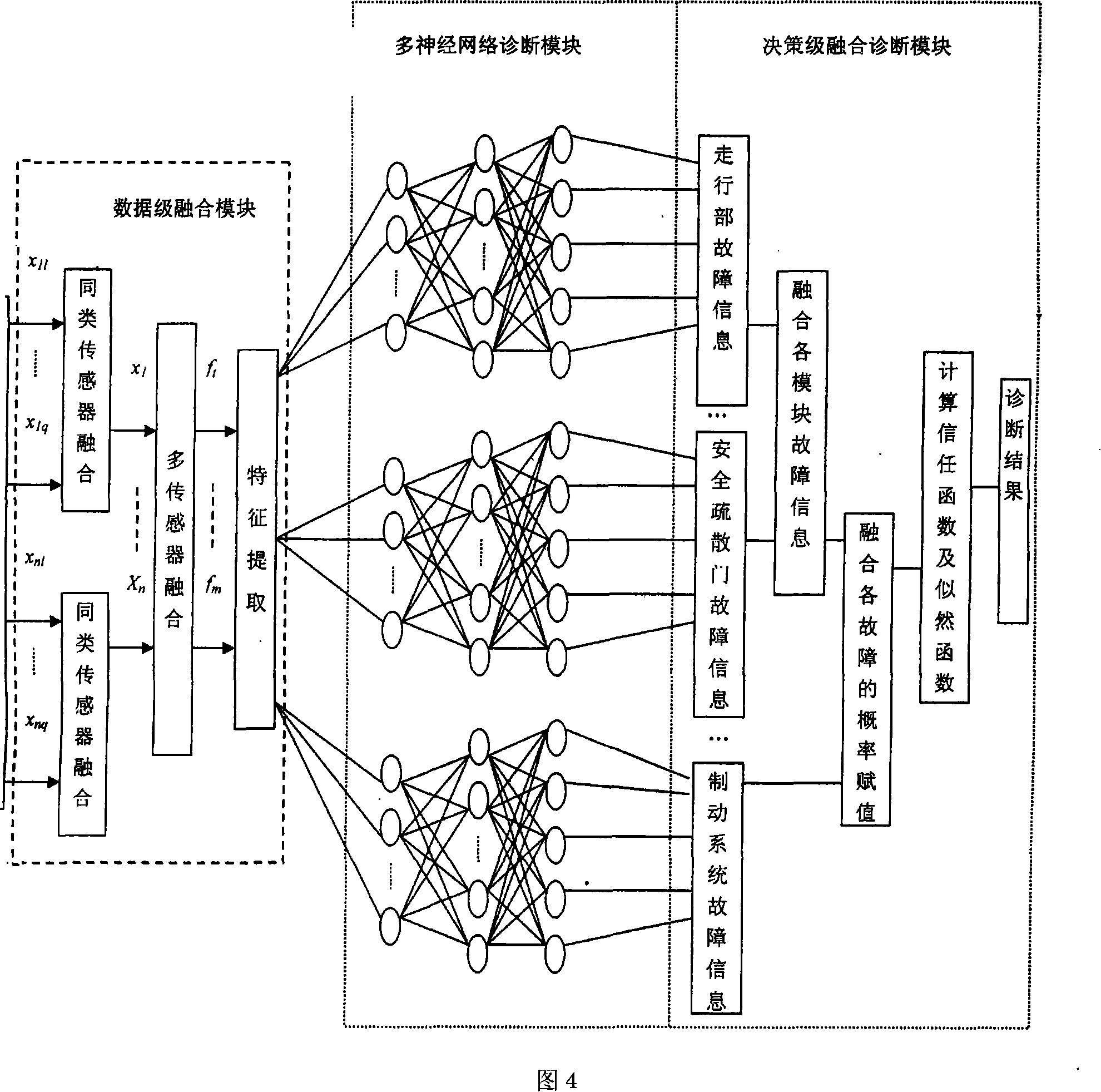Built-in intelligent fault diagnosing device based on data inosculating pattern recognition and method thereof
A technology of pattern recognition and data fusion, which is applied in the direction of data exchange, signal transmission system, and instruments through path configuration. It can solve the problems of ambiguous and inaccurate diagnostic information, and achieve the improvement of equipment operating conditions, scalability, and safety. Effects of Sex and Reliability
- Summary
- Abstract
- Description
- Claims
- Application Information
AI Technical Summary
Problems solved by technology
Method used
Image
Examples
Embodiment Construction
[0031] The embedded fault intelligent diagnosis device for rail transit trains based on data fusion pattern recognition includes hardware and software. Both hardware and software adopt functional modular design. The hardware structure is shown in Figure 1, including data acquisition modules and embedded modules. It consists of a signal acquisition unit and a central processing unit, where the signal acquisition unit includes sensors, signal conditioning, AD conversion, DSP (or MCU), digital input modules, FLASH memory and CAN bus interface. The signal acquisition unit is directly installed and fixed on the main parts of the key equipment of the train to complete the fault diagnosis, calibration and calibration of the sensor, the acquisition of the working state parameters of the train equipment, the feature extraction of the signal and the CAN bus communication. The central processing unit adopts the embedded PC of PC104 bus. PC104 is an industrial control bus specially defined...
PUM
 Login to View More
Login to View More Abstract
Description
Claims
Application Information
 Login to View More
Login to View More - R&D
- Intellectual Property
- Life Sciences
- Materials
- Tech Scout
- Unparalleled Data Quality
- Higher Quality Content
- 60% Fewer Hallucinations
Browse by: Latest US Patents, China's latest patents, Technical Efficacy Thesaurus, Application Domain, Technology Topic, Popular Technical Reports.
© 2025 PatSnap. All rights reserved.Legal|Privacy policy|Modern Slavery Act Transparency Statement|Sitemap|About US| Contact US: help@patsnap.com



